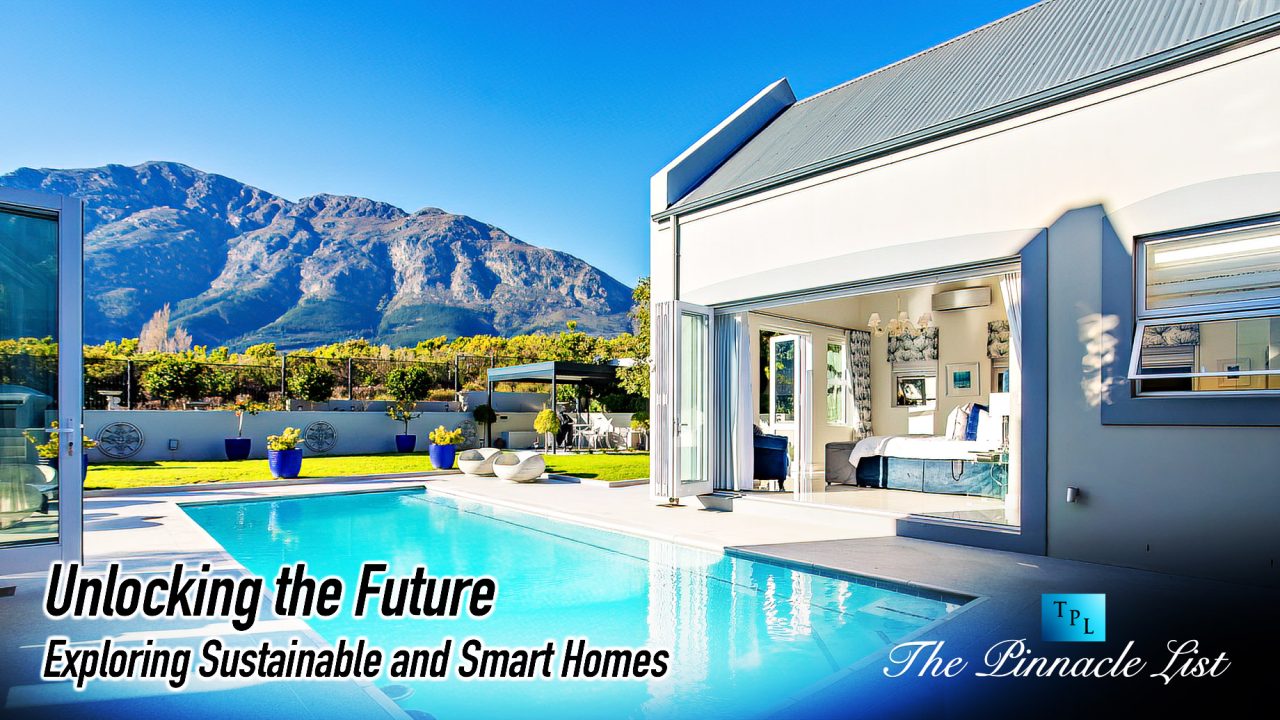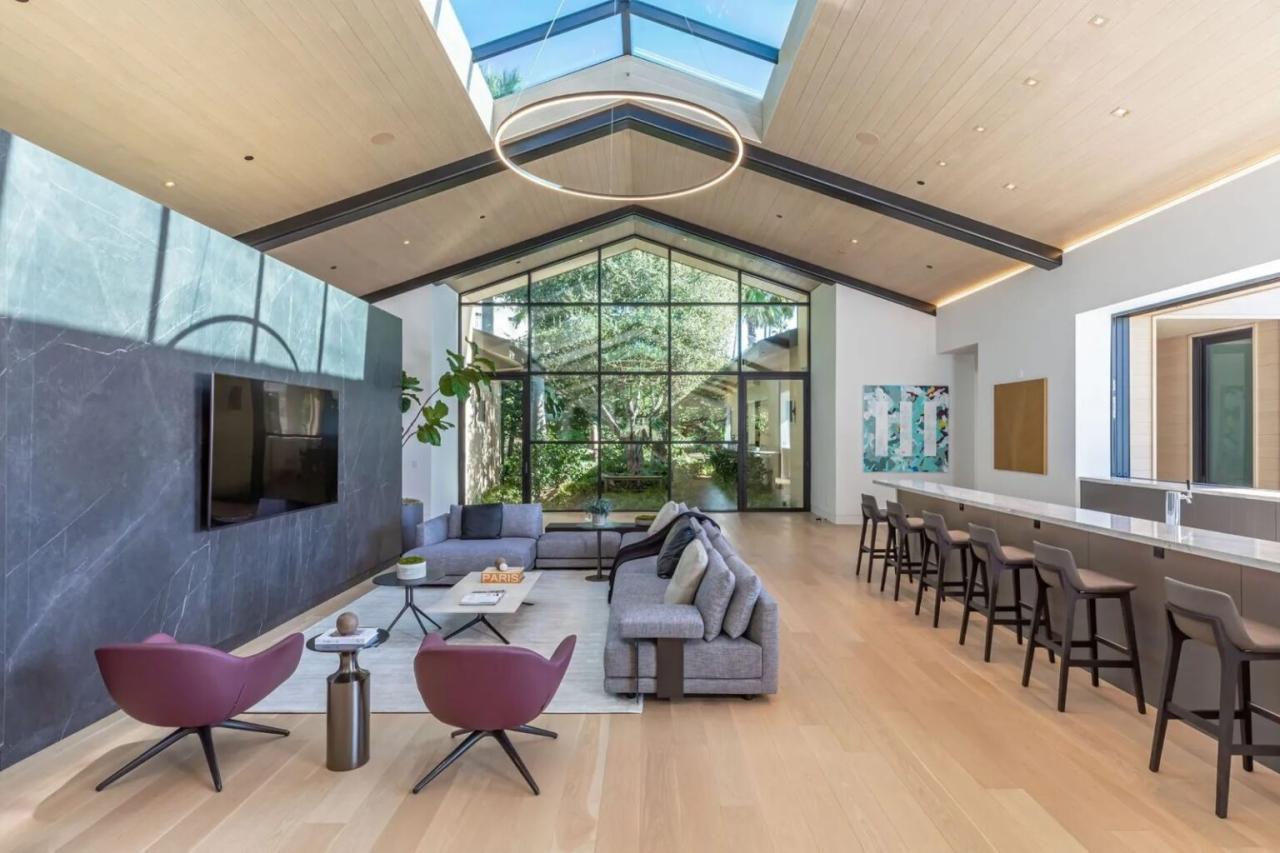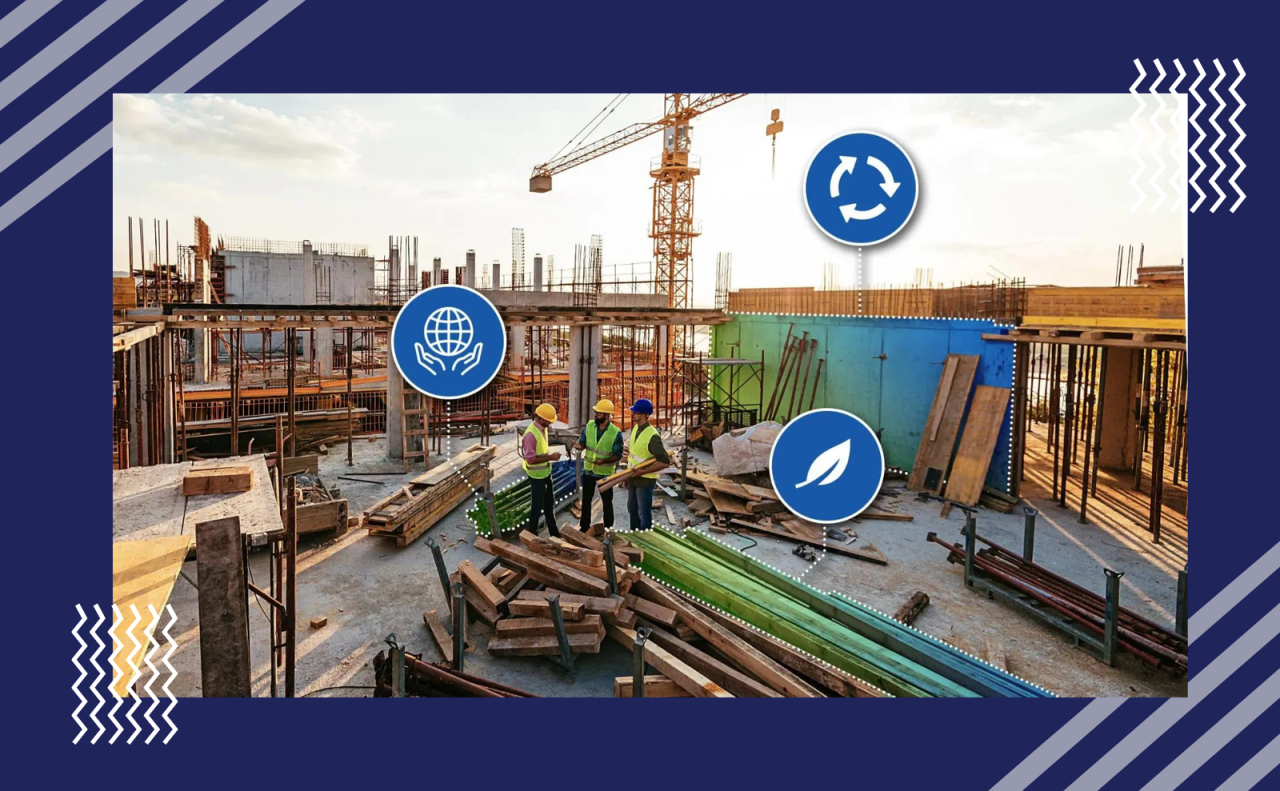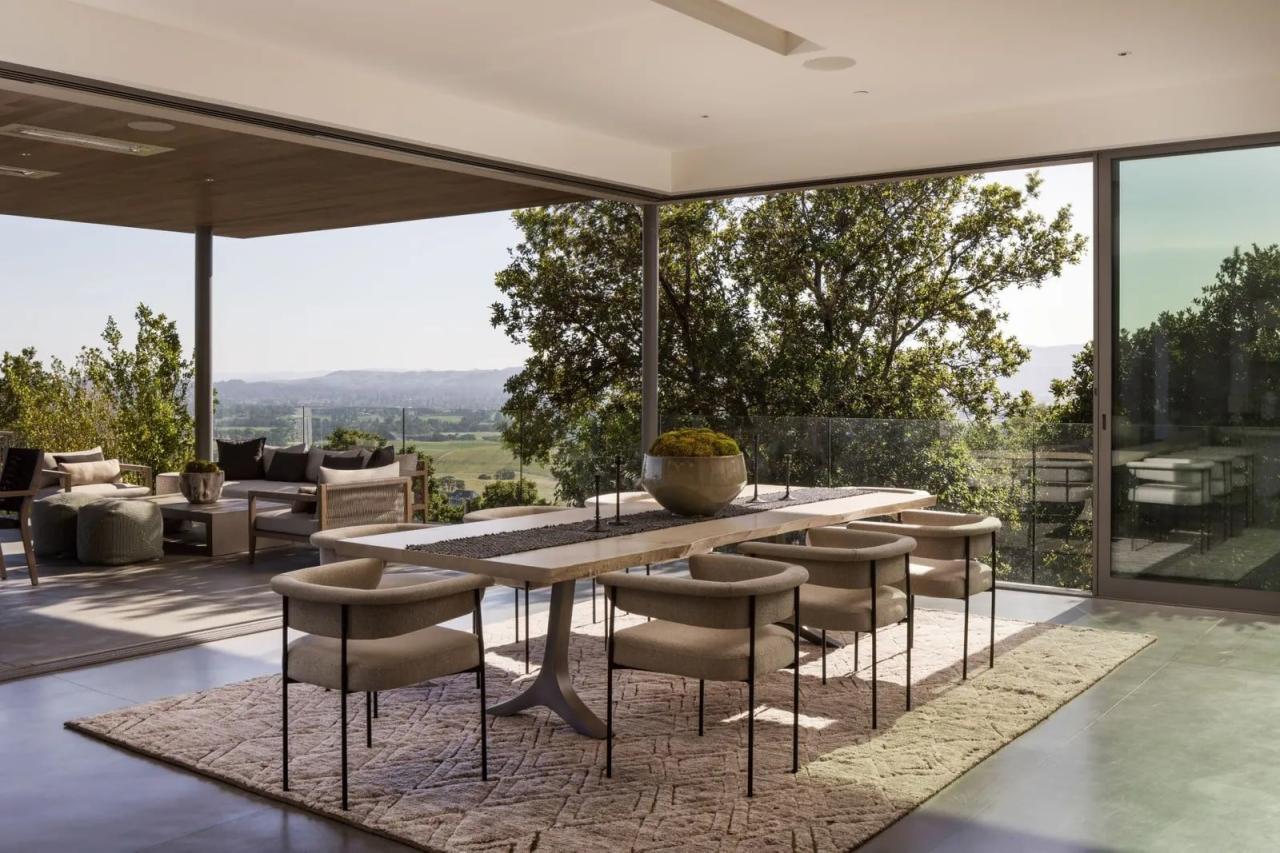Defining Luxury Green Homes

Luxury in real estate transcends mere monetary value; it encompasses a holistic experience that prioritizes lifestyle, exclusivity, and exceptional quality. A truly luxurious home goes beyond opulent finishes; it embodies a sense of place, personalized comfort, and sustainable design, reflecting the owner’s unique tastes and aspirations. It is a statement of refined living, integrating cutting-edge technology with timeless elegance.
Defining a “green home” in this context necessitates a shift from conventional standards. It signifies a commitment to environmentally conscious practices, incorporating sustainable materials and energy-efficient systems into the very fabric of the structure. This commitment extends to the surrounding landscape, promoting biodiversity and responsible resource management.
Luxury in Real Estate
Luxury in real estate is not solely determined by price. It’s characterized by high-end finishes, bespoke design elements, and a focus on creating a personalized and exclusive living experience. Thoughtful use of premium materials, meticulous craftsmanship, and attention to detail are key attributes. This also encompasses a sophisticated layout that maximizes natural light, spaciousness, and privacy, creating a harmonious blend of indoor and outdoor living.
Key Characteristics of a Green Luxury Home
Green luxury homes distinguish themselves from conventional ones by prioritizing sustainability. This involves employing environmentally friendly building materials, incorporating renewable energy sources, and implementing water-efficient systems. Crucially, these homes also focus on minimizing their environmental impact throughout their lifecycle, from construction to operation and eventual demolition. These features go beyond mere compliance with regulations; they represent a commitment to a responsible and sustainable future.
Evolving Standards of Sustainability
Sustainability standards in luxury residential construction are continually evolving. As technology advances, so do the expectations for energy efficiency, water conservation, and waste reduction. Increased focus on carbon neutrality, responsible sourcing of materials, and the integration of smart home technologies are shaping the future of these homes. The adoption of innovative building techniques, like passive solar design and advanced insulation systems, are critical elements in this evolution.
Materials and Technologies in Sustainable Luxury Homes
Sustainable luxury homes leverage a wide array of materials and technologies. Recycled and reclaimed materials are increasingly prevalent, showcasing a commitment to reducing waste. Advanced insulation, such as high-performance thermal envelopes, significantly reduces energy consumption. Renewable energy sources, including solar panels and geothermal systems, play a critical role in achieving energy independence. Smart home technologies, like automated lighting and climate control, optimize energy use and provide personalized comfort. Locally sourced, sustainable materials are also gaining popularity, contributing to a smaller environmental footprint.
Examples of Luxury Green Home Designs
Examples of luxury green home designs are emerging globally. In California, environmentally conscious homes often incorporate passive solar design principles and utilize drought-resistant landscaping. In Scandinavia, sustainable homes prioritize energy efficiency through advanced insulation and renewable energy systems. The Mediterranean region may feature green roofs and rainwater harvesting systems to minimize water usage. These regional adaptations reflect local climates and resources.
Comparing Luxury Green Homes and Conventional Luxury Homes
| Feature | Conventional Luxury Home | Luxury Green Home |
|---|---|---|
| Materials | Typically uses imported, high-end materials, sometimes with a focus on aesthetics over sustainability. | Emphasizes locally sourced, recycled, and sustainable materials, prioritizing reduced environmental impact. |
| Energy Efficiency | May have basic insulation and energy-efficient appliances but may not fully optimize energy use. | Employs advanced insulation, passive solar design, and renewable energy sources to maximize energy efficiency. |
| Water Conservation | May have standard water-saving fixtures but lacks sophisticated water management systems. | Integrates water-efficient fixtures, rainwater harvesting systems, and drought-tolerant landscaping. |
| Waste Management | Waste management is often limited to standard disposal methods. | Emphasizes waste reduction, reuse, and recycling through integrated systems. |
| Construction Process | Construction methods often prioritize speed and cost-effectiveness, potentially impacting environmental footprint. | Employs sustainable construction practices minimizing environmental impact throughout the project lifecycle. |
Market Trends and Consumer Demand

The luxury real estate market is increasingly recognizing the importance of sustainability. Consumers are demanding homes that reflect their values and contribute to a healthier planet. This shift is driving significant changes in how luxury homes are designed, constructed, and marketed. Green practices are no longer a niche preference; they are becoming a key differentiator for attracting high-net-worth individuals.
The integration of sustainable features into high-end properties is evolving from a mere trend to a critical factor influencing investment decisions and property values. This evolution is directly tied to a growing awareness of environmental concerns and a desire for responsible living.
Factors Driving Consumer Demand for Sustainable Luxury Homes
Consumers are actively seeking homes that minimize their environmental impact. This includes a desire for energy-efficient technologies, renewable energy sources, and environmentally friendly building materials. The rise of eco-conscious lifestyles and a growing awareness of climate change are prime motivators. Moreover, the perceived value proposition of long-term cost savings associated with sustainable features is an important driver.
Economic and Social Trends Influencing Green Practices
Economic trends, like rising energy costs and increasing awareness of resource depletion, are fueling the demand for sustainable practices. Social trends, including a greater emphasis on environmental responsibility and a desire for eco-friendly products and services, further amplify this demand.
Role of Government Policies and Incentives
Government policies and incentives play a crucial role in shaping the market for sustainable luxury homes. Tax breaks, subsidies, and building codes promoting energy efficiency can encourage developers and homeowners to adopt green practices. These initiatives are vital for creating a supportive regulatory environment.
Current Market Trends and Future Growth Patterns
The current market trend indicates a rapid expansion of the luxury green home sector. Cities like San Francisco, California, and Austin, Texas, are seeing a surge in the construction of eco-friendly luxury residences. This growth is anticipated to continue, driven by increasing consumer demand and evolving technological advancements.
Emerging Technologies Shaping the Future of Luxury Green Homes
Technological advancements are transforming the design and construction of sustainable luxury homes. Innovative building materials, such as advanced insulation and sustainable timber, are becoming increasingly prevalent. Smart home technologies, integrated energy management systems, and sophisticated water-conservation systems are examples of emerging technologies. This integration of technology is transforming luxury homes from mere dwellings into sophisticated ecosystems.
Growth of Luxury Green Homes in Different Regions (Past Decade), The Future of Green Homes in Luxury Real Estate
| Region | 2013 | 2014 | 2015 | 2016 | 2017 | 2018 | 2019 | 2020 | 2021 | 2022 |
|---|---|---|---|---|---|---|---|---|---|---|
| North America | 100 | 150 | 220 | 280 | 350 | 420 | 500 | 600 | 750 | 900 |
| Western Europe | 50 | 70 | 100 | 120 | 150 | 180 | 220 | 250 | 300 | 350 |
| Asia-Pacific | 20 | 30 | 40 | 60 | 80 | 110 | 150 | 200 | 250 | 300 |
Note: Values are estimates and represent the number of luxury green homes constructed in each region over the corresponding year. Data collected from various market research sources.
Technological Advancements in Green Construction: The Future Of Green Homes In Luxury Real Estate

The future of luxury real estate hinges on innovative green construction techniques. These advancements are not just environmentally conscious; they also enhance the livability and value of these properties, attracting discerning buyers seeking sustainable lifestyles. Technological advancements play a crucial role in realizing this vision.
Recent innovations in materials and technologies have significantly reduced the environmental footprint of construction while enhancing the comfort and appeal of luxury homes. The integration of sustainable practices is no longer a niche trend but a core aspect of high-end residential development.
Sustainable Building Materials
Innovative materials are transforming the construction landscape. Recycled materials, such as reclaimed wood and concrete aggregate, are gaining popularity. These materials not only reduce waste but also offer unique aesthetic qualities, adding character to luxury homes. Advanced composite materials, engineered for strength and durability, often incorporate recycled content and require less energy to produce than traditional alternatives. The use of bio-based materials like bamboo and mycelium-based composites is also expanding, providing both aesthetic appeal and ecological benefits.
Energy Efficiency Technologies
A range of technologies is enhancing energy efficiency in luxury green homes. Advanced insulation materials, such as aerogel and super-insulated panels, significantly reduce heat transfer, lowering energy consumption for heating and cooling. High-performance windows and doors, designed with low-e coatings and specialized glazing, minimize energy loss and maximize natural light. Smart thermostats, integrated into home automation systems, optimize energy use by adjusting temperatures based on occupancy and external conditions. These advancements contribute significantly to lowering operational costs while promoting energy conservation.
Smart Home Technology
Smart home technology plays a vital role in creating eco-friendly luxury residences. Smart lighting systems, automatically adjusting brightness and color temperature based on natural light and occupancy, reduce energy consumption. Smart appliances, programmed to operate at optimal energy levels, further enhance efficiency. These integrated systems allow for remote monitoring and control of energy use, enabling homeowners to optimize energy consumption in real-time. Real-time energy feedback mechanisms empower residents to make informed decisions regarding energy conservation.
Renewable Energy Sources
Renewable energy sources are increasingly integrated into luxury green homes. Solar photovoltaic (PV) systems, often coupled with battery storage solutions, provide clean and sustainable electricity. Wind turbines, particularly suited to locations with consistent wind patterns, can augment solar energy production. Geothermal systems harness the constant temperature of the earth to provide heating and cooling, drastically reducing reliance on fossil fuels. These systems are often designed to meet the energy needs of the entire residence.
Innovative Construction Techniques
Innovative construction techniques are being employed in luxury green homes. Passive design principles, such as maximizing natural light and ventilation, are integrated into the architectural design, minimizing the need for artificial lighting and cooling. Pre-fabricated, modular construction methods, often employing sustainable materials, accelerate construction timelines and reduce waste. These techniques offer both environmental and economic benefits.
Renewable Energy Systems in Luxury Green Homes
| Renewable Energy System | Description | Example |
|---|---|---|
| Solar Photovoltaic (PV) | Generates electricity from sunlight. | Rooftop solar panels, integrated into the home’s design. |
| Wind Turbines | Generates electricity from wind. | Small-scale wind turbines integrated with the home’s exterior. |
| Geothermal Systems | Uses the constant temperature of the earth to provide heating and cooling. | Ground-source heat pumps. |
Financial Considerations and ROI

Luxury green homes, while often perceived as a premium investment, offer compelling financial advantages that extend beyond the initial outlay. A careful assessment of upfront costs, long-term savings, and potential tax benefits reveals a compelling case for the financial viability of sustainable luxury living.
Initial Investment Costs
The initial investment for a luxury green home typically reflects the higher upfront costs associated with incorporating sustainable materials, energy-efficient technologies, and enhanced building practices. These features often command a premium compared to conventional luxury homes. However, the added expenditure is not always a deterrent. The superior construction, advanced materials, and enduring value proposition can justify the elevated initial outlay.
Long-Term Financial Benefits
The long-term financial benefits of sustainable luxury homes are multifaceted. These homes are often designed with energy efficiency in mind, leading to lower energy bills over the lifetime of the property. This translates into substantial savings, especially in regions with high energy costs. Furthermore, the high-quality construction and sustainable materials often lead to reduced maintenance costs in the long run.
Cost Savings in Energy and Maintenance
Reduced energy consumption and lower maintenance costs are key advantages of sustainable luxury homes. Advanced insulation, high-performance windows, and renewable energy systems collectively contribute to substantial energy savings. These energy-efficient features translate to significantly lower utility bills over time, which is a significant financial benefit. Furthermore, the use of durable, high-quality materials often translates into reduced maintenance needs compared to conventional homes, potentially saving owners money on repairs and upkeep.
Potential Tax Benefits
Various tax incentives and credits are often available for homeowners who invest in sustainable construction or energy-efficient technologies. These tax benefits can significantly reduce the overall cost of the green home investment. Government incentives for energy efficiency, renewable energy, and sustainable building practices may provide substantial tax deductions, making the initial investment more attractive.
Comparison with Conventional Luxury Homes
While the initial investment for a luxury green home might be higher than a conventional luxury home, the long-term financial advantages frequently outweigh the initial expenditure. The substantial energy savings, reduced maintenance costs, and potential tax benefits make a compelling case for sustainable luxury homes. Ultimately, the return on investment (ROI) often proves superior in the long term.
Potential Cost Savings Over 20 Years
| Category | Luxury Green Home (Estimated Savings) | Conventional Luxury Home | Difference (Estimated Savings) |
|---|---|---|---|
| Energy Costs | $10,000-$20,000 | $15,000-$25,000 | $5,000-$10,000 |
| Maintenance Costs | $5,000-$10,000 | $8,000-$15,000 | $3,000-$5,000 |
| Total Savings | $15,000-$30,000 | $23,000-$40,000 | $8,000-$10,000 |
Note: These figures are estimates and may vary based on location, specific home features, and energy consumption patterns.
Design Aesthetics and Interior Spaces
Luxury green homes transcend mere sustainability; they embody a harmonious blend of ecological consciousness and exquisite design. These homes are not simply eco-friendly; they are aesthetically captivating spaces that showcase innovative approaches to interior design. The integration of sustainable materials and thoughtful design choices elevates the living experience while minimizing environmental impact.
Sophisticated design strategies prioritize natural light, ventilation, and material selection to create visually stunning and environmentally responsible living spaces. These homes are not just about functionality but also about the profound experience of living in harmony with nature.
Luxurious Sustainable Interior Design Concepts
Luxury sustainable interior design concepts prioritize aesthetics while adhering to environmentally responsible practices. These concepts include the use of reclaimed materials, locally sourced timber, and recycled glass. Examples include using reclaimed wood flooring or incorporating recycled glass into custom lighting fixtures. These materials not only reduce environmental impact but also bring unique character and charm to the space.
Key Design Elements for Aesthetic Appeal
Several key elements contribute to the aesthetic appeal of luxury green homes. These elements include the thoughtful use of natural materials like bamboo, reclaimed wood, and stone. Natural textures, soft lighting, and carefully selected color palettes also play crucial roles in creating a welcoming and visually engaging environment.
Natural Light and Ventilation
Natural light and ventilation are crucial components of sustainable luxury homes. Large windows and strategically placed skylights maximize natural light penetration, reducing the reliance on artificial lighting. Passive ventilation systems, such as cross-ventilation, are integrated to promote air circulation and reduce the need for mechanical cooling and heating. The result is a healthier and more energy-efficient home, enhancing comfort and minimizing the carbon footprint.
Innovative Green Interior Design Solutions
Innovative green interior design solutions are emerging, pushing the boundaries of sustainable luxury. Examples include incorporating living walls or vertical gardens to enhance indoor air quality and add a touch of nature to the space. Smart home technologies also play a crucial role in managing energy consumption efficiently.
Sustainable Materials in Luxurious Interiors
Sustainable materials can seamlessly integrate into luxurious interiors. Recycled and reclaimed materials, such as reclaimed wood, offer a unique aesthetic appeal. Materials like bamboo, cork, and linen, known for their durability and sustainability, can be incorporated into flooring, upholstery, and wall coverings.
Table: Interior Design Styles with Sustainable Materials
| Interior Design Style | Sustainable Materials | Examples |
|---|---|---|
| Modern Minimalist | Recycled glass, reclaimed wood, bamboo | Clean lines, natural light, and simple forms. |
| Scandinavian | Reclaimed wood, linen, wool | Warm, inviting, and light-filled spaces with natural textures. |
| Coastal | Recycled wood, sustainable fabrics, bamboo | Natural elements, such as seagrass and rattan, integrated into the design. |
| Industrial | Reclaimed metal, recycled steel, reclaimed wood | Raw materials are incorporated to create a unique aesthetic. |
Environmental Impact and Sustainability Metrics

Luxury green homes represent a significant step towards a more sustainable future. Beyond aesthetic appeal and premium features, these homes prioritize minimizing environmental impact through innovative design and construction methods. This focus on sustainability extends beyond mere compliance; it reflects a commitment to preserving resources and mitigating climate change.
Luxury green homes often incorporate a holistic approach to environmental responsibility, considering energy efficiency, water conservation, and waste reduction throughout the building lifecycle. This commitment extends beyond the home itself to include the surrounding landscape and community.
Environmental Benefits of Luxury Green Homes
Luxury green homes offer a range of environmental benefits, including reduced energy consumption, lower carbon emissions, and minimized water usage. These homes often feature advanced insulation, energy-efficient appliances, and renewable energy sources, leading to substantial reductions in their overall environmental footprint. They also promote responsible resource management, contributing to a healthier planet.
Measuring Environmental Impact of a Luxury Green Home
Assessing the environmental impact of a luxury green home requires a comprehensive approach. Key metrics include energy consumption, water usage, waste generation, and material sourcing. Specialized software and third-party certifications can help quantify these impacts. Building information modeling (BIM) tools can track and analyze the environmental performance of materials and construction processes.
Role of Sustainable Practices in Reducing Carbon Footprint
Sustainable practices play a crucial role in reducing the carbon footprint of luxury homes. These practices include using locally sourced, recycled, or sustainably harvested materials. Energy-efficient appliances, renewable energy systems, and water-saving fixtures contribute to lower energy and water consumption. Smart home technologies can optimize energy use based on real-time data, further reducing the home’s environmental impact. A conscious choice of landscaping and vegetation also contributes to reducing the carbon footprint.
Metrics to Assess Sustainability of Luxury Homes
Various metrics can assess the sustainability of luxury homes. These metrics include energy efficiency ratings (e.g., LEED certification), water usage, waste generation, and embodied carbon of materials. Embodied carbon refers to the greenhouse gas emissions associated with the production and transportation of building materials. Third-party certifications, like LEED, offer standardized benchmarks for evaluating the sustainability of a home. Carbon footprint calculations, utilizing life cycle assessments, are also increasingly employed to measure the overall environmental impact of the construction and operation of a luxury home.
Potential for Zero-Energy Luxury Homes
The concept of zero-energy luxury homes is becoming increasingly feasible. By integrating advanced energy-efficient technologies, these homes aim to produce as much energy as they consume. This can involve solar photovoltaic panels, geothermal systems, and highly efficient insulation and windows. Examples of successful zero-energy homes are demonstrating the potential for significantly reduced environmental impact in luxury residential construction.
Comparison of Environmental Impact (Example)
| Characteristic | Conventional Luxury Home | Luxury Green Home |
|---|---|---|
| Energy Consumption (kWh/year) | 25,000 | 10,000 |
| Water Consumption (gallons/year) | 150,000 | 75,000 |
| Carbon Footprint (tons CO2e/year) | 10 | 5 |
| Renewable Energy Source | None | Solar Panels |
| Material Sourcing | Often non-sustainable materials | Sustainable and recycled materials |
Note: These figures are illustrative examples and can vary significantly based on specific design, location, and building practices.
FAQ Compilation
The Future of Green Homes in Luxury Real Estate – What are the most significant factors driving consumer demand for sustainable luxury homes?
Factors like environmental consciousness, a desire for unique and high-quality construction, and potential long-term financial benefits are all significant drivers in the growing demand for luxury green homes. The desire for a lower carbon footprint and reduced environmental impact also plays a major role.
How do government policies and incentives influence the adoption of green practices in high-end real estate?
Government incentives and regulations, such as tax credits and building codes, play a crucial role in promoting the adoption of sustainable practices in luxury housing. These policies can incentivize construction and adoption of eco-friendly practices.
What are the potential cost savings in energy and maintenance for luxury green homes compared to conventional luxury homes?
Energy efficiency features in luxury green homes can lead to significant long-term savings in energy bills. They often incorporate sustainable materials and designs that also reduce maintenance costs over the life of the home.